Chemistry I: Lesson 4: Periodic Table
1/57
There's no tags or description
Looks like no tags are added yet.
Name | Mastery | Learn | Test | Matching | Spaced |
|---|
No study sessions yet.
58 Terms
CRB When Dmitri Mendeleev published the first periodic table, it was based on the periodic law. Which of the following best describes the periodic law?
(A) Elements' physical properties depend on their atomic numbers in a periodic way.
(B) Elements' chemical properties depend on their atomic numbers in a periodic way.
(C) Elements' chemical and physical properties depend on their atomic numbers in a periodic way.
(D) Elements' chemical, physical, and nuclear properties depend on their atomic numbers in a periodic way.
(C) Elements' chemical and physical properties depend on their atomic numbers in a periodic way.
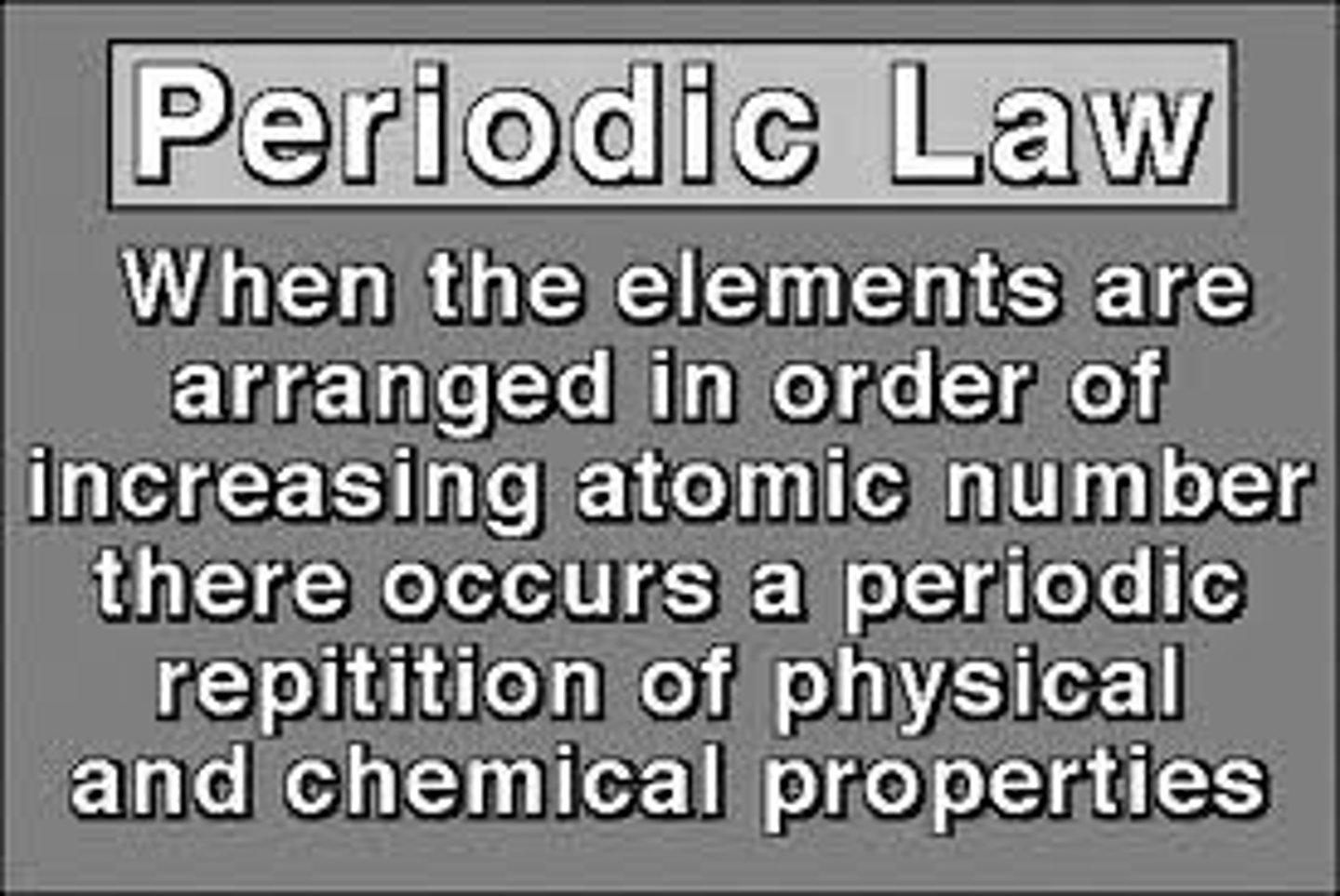
Which type of substance will be pulled into an external magnetic field?
(A) Diamagnetic
(B) Antiferromagnetic
(C) Paramagnetic
(D) Ferromagnetic
(C) Paramagnetic
Paramagnetic substances will be pulled into an external magnetic field. Paramagnetic substances have one or more unpaired electrons.

Which type of substance will be slightly repelled by an external magnetic field?
(A) Diamagnetic
(B) Antiferromagnetic
(C) Paramagnetic
(D) Ferromagnetic
(A) Diamagnetic
Diamagnetic substances will be slightly repelled by an external magnetic field. Diamagnetic substances have only paired electrons in its outermost orbital.

Na+ is an example of which type of substance?
(A) Diamagnetic
(B) Antiferromagnetic
(C) Paramagnetic
(D) Ferromagnetic
(A) Diamagnetic
Na+ is an example of a diamagnetic substance because it has paired electrons in its outermost orbital.
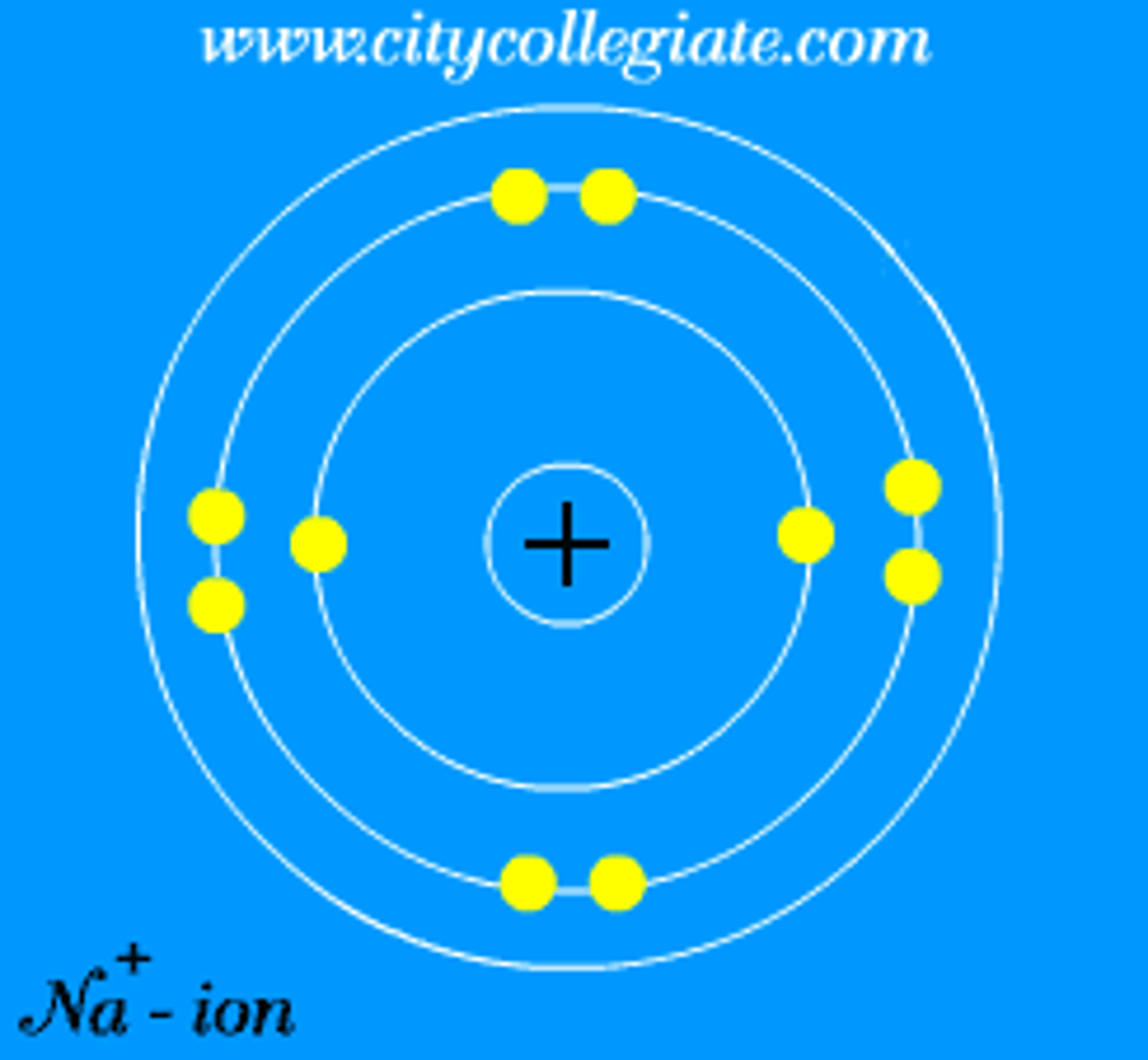
Carbon is an example of which type of substance?
(A) Diamagnetic
(B) Antiferromagnetic
(C) Paramagnetic
(D) Ferromagnetic
(C) Paramagnetic
Carbon is an example of a paramagnetic substance because its outermost orbital has unpaired eletrons.
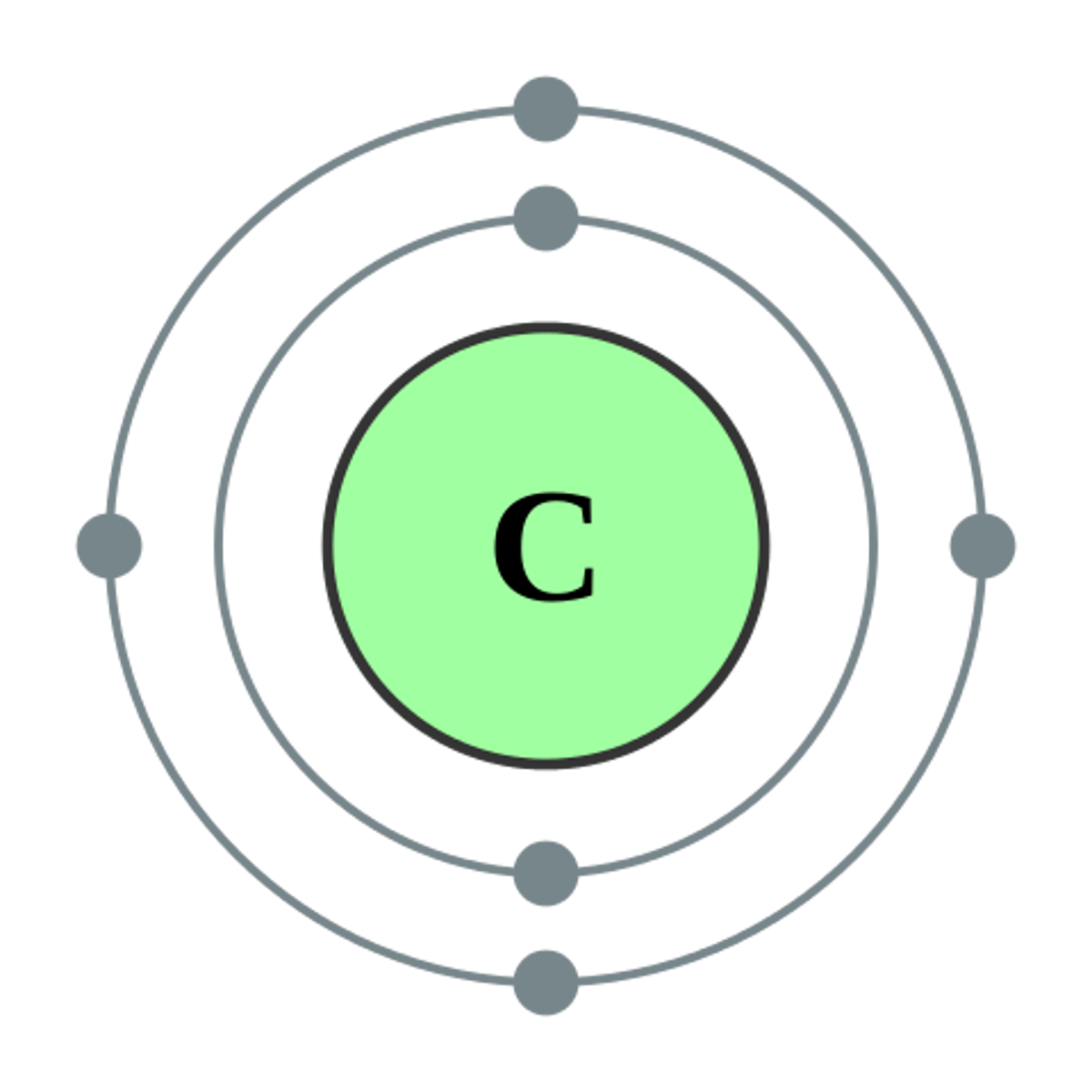
Oxygen is more electronegative than Carbon. What does this mean?
Oxygen has a greater power to attract electrons to itself.
Carbon (electronegativity of 2.5) bound to Hydrogen (electronegativity of 2.1) is what type of bond? How did you know this based on electronegativity values?
(A) Nonpolar covalent
(B) Polar covalent
(C) Ionic
(D) Hydrogen
(A) Nonpolar covalent
Carbon and Hydrogen have an electronegativity difference of .4, which is less than .5, making their bond a nonpolar covalent bond.
Sodium (electronegativity of .9) bound to Chlorine (electronegativity of 3.0) is what type of bond? How did you know this based on electronegativity values?
(A) Nonpolar covalent
(B) Polar covalent
(C) Ionic
(D) Hydrogen
(C) Ionic
Sodium and Chlorine have an electronegativity difference of 2.1, which is greater than 1.7, making their bond an ionic bond.
Carbon bound to Carbon is what type of bond? How did you know this based on electronegativity values?
(A) Nonpolar covalent
(B) Polar covalent
(C) Ionic
(D) Hydrogen
(A) Nonpolar covalent
Carbon and Carbon have an electronegativity difference of 0, which is less than .5, making their bond a nonpolar covalent bond.
Carbon (electronegativity of 2.5) bound to Oxygen (electronegativity of 3.5) is what type of bond? How did you know this based on electronegativity values?
(A) Nonpolar covalent
(B) Polar covalent
(C) Ionic
(D) Hydrogen
(B) Polar covalent
Carbon and Oxygen have an electronegativity difference of 1.0, which is greater than .5, making their bond a polar covalent bond.
Periodic table columns are referred to as _________ while periodic table rows are referred to as _________.
Fill in the blanks using the following options:
- periods
- halogens
- metalloids
- groups
Periodic table columns are referred to as groups while periodic table rows are referred to as periods.
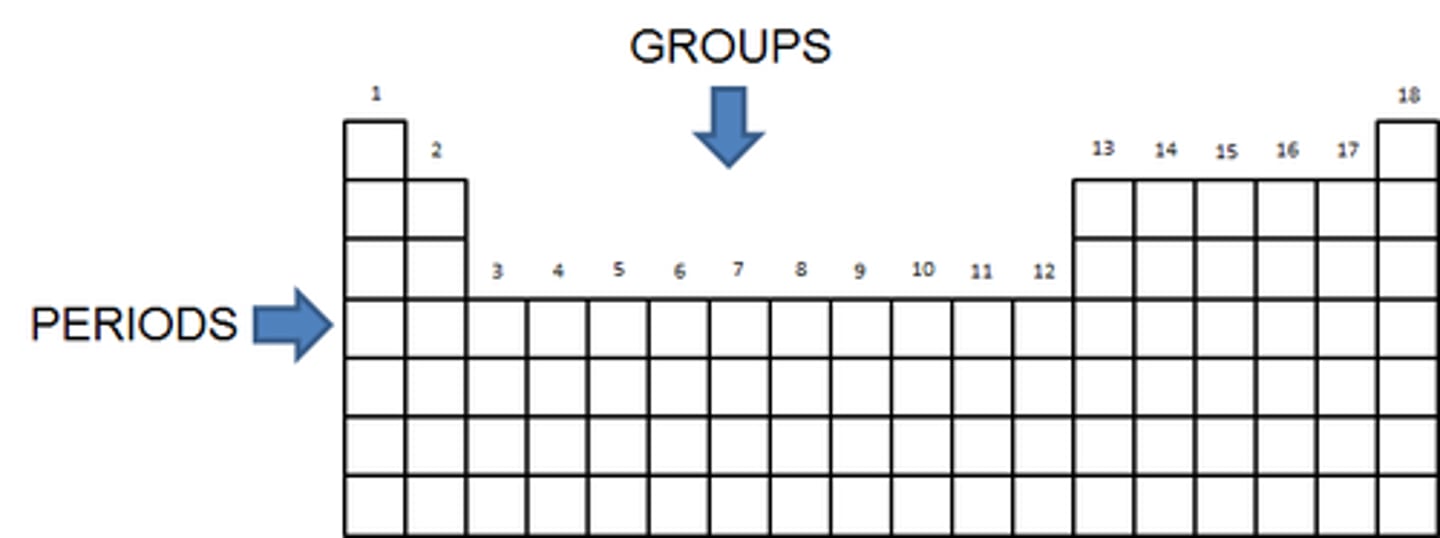
CRB Which of the following best explains why elements in the same group share similar chemical properties?
(A) Elements in the same group have a similar number of nucleons, giving them similar chemical properties.
(B) Elements in the same group have the same number of valence electrons, giving them similar chemical properties.
(C) Elements in the same group have the same number of electrons, giving them similar chemical properties.
(D) Elements in the same group have various multiples of the first element's valence electrons, giving them similar chemical properties.
(B) Elements in the same group have the same number of valence electrons, giving them similar chemical properties.
Having the same number of valence electrons allows the different elements to interact with their environments in similar ways.
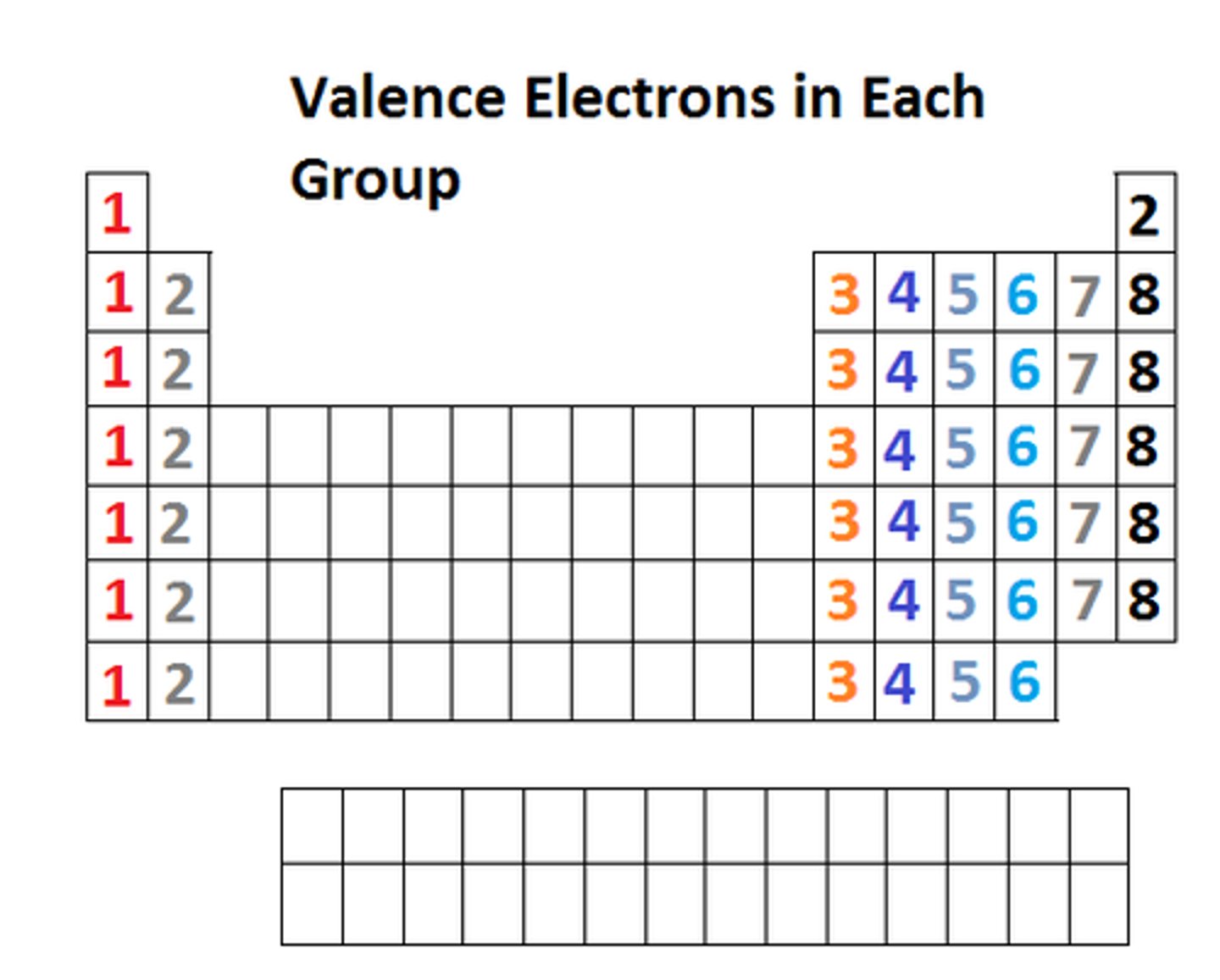
CRB In previous IUPAC identification systems, the elements were sorted into groups based upon which sub-shells housed the valence electrons. Which of the following characteristics and subgroups belonged to group A (the representative elements), and which belonged to group B (the non-representative elements)?
I. Can have unexpected electron configurations
II. Contain the lanthanide and actinide series (valence electrons in s and f orbitals)
III. Contain valence electrons in s and p orbitals
IV. Includes transition elements (valence electrons in s and d orbitals
Group A (the representative elements):
III. Contain valence electrons in s and p orbitals
Group B (the non-representative elements):
I. Can have unexpected electron configurations
II. Contain the lanthanide and actinide series (valence electrons in s and f orbitals)
IV. Includes transition elements (valence electrons in s and d orbitals
Alkali metals are found where on the periodic table?
(A) Group 1A
(B) Period 1A
(C) Group 2A
(D) Period 2A
(A) Group 1A
Alkali metals are found in group 1A (also called group 1) on the periodic table.

Which of the following elements in group 1 is not actually an alkali metal? What is its actual classification?
(A) Hydrogen
(B) Lithium
(C) Sodium
(D) Cesium
(A) Hydrogen. It is actually a nonmetal.
Alkaline earth metals are found where on the periodic table?
(A) Group 1A
(B) Period 1A
(C) Group 2A
(D) Period 2A
(C) Group 2A
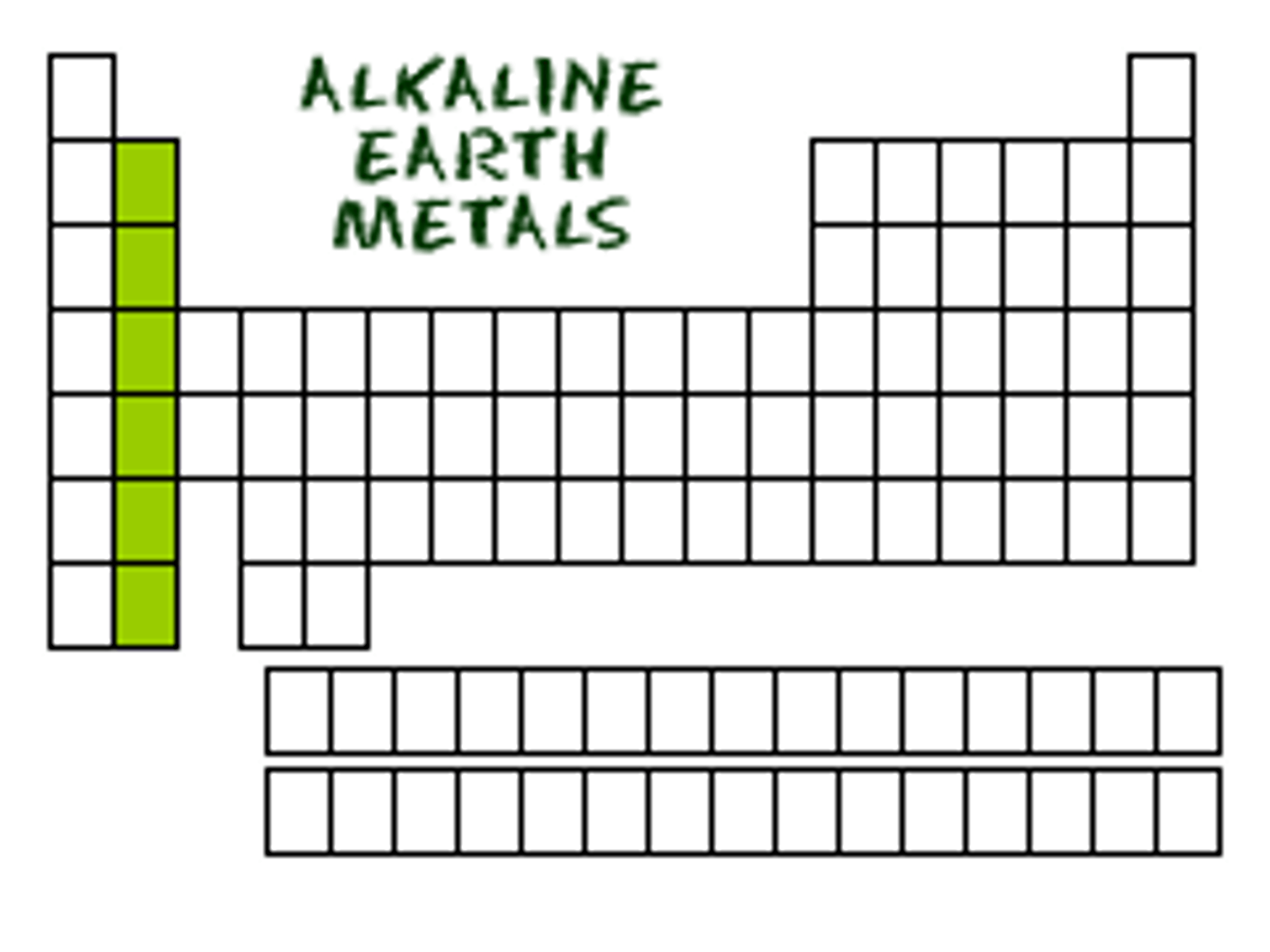
True or false? Alkaline earth metals are more reactive than Alkali metals because Alkaline earth metals have more electrons.
False. Alkali metals are more reactive than Alkaline earth metals because Alkali metals have an unpaired electron.
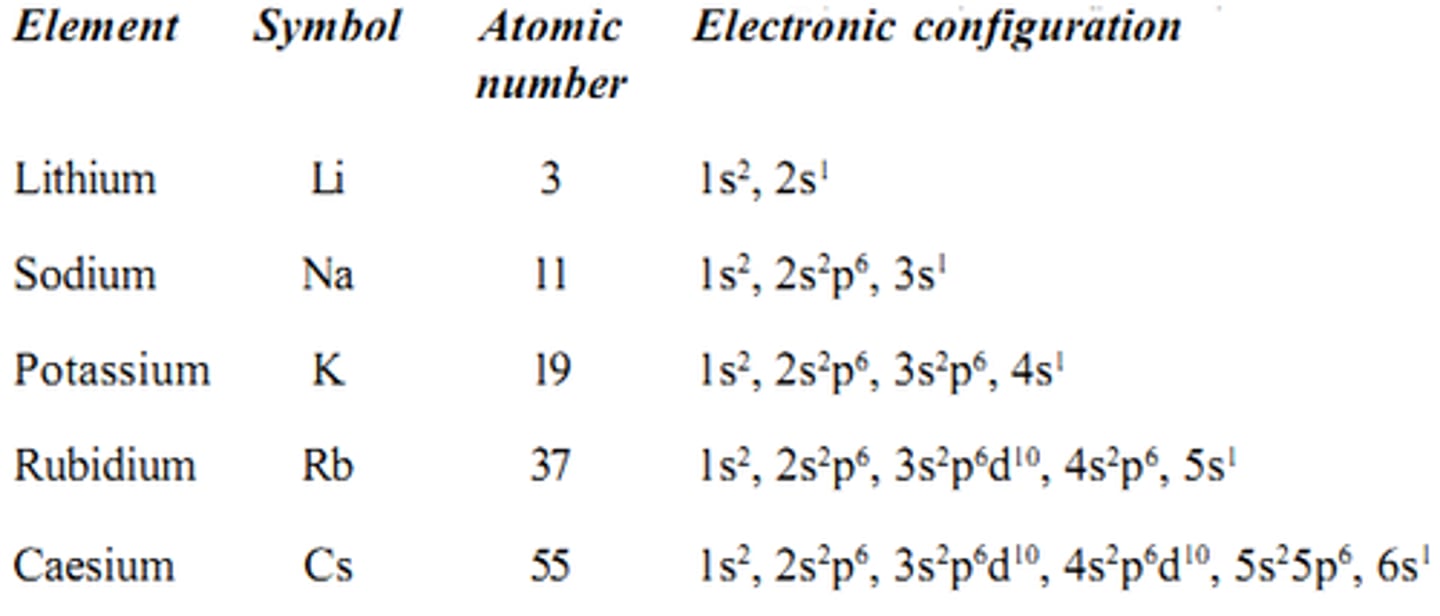
Metals are considered to be:
I. Malleable
II. Ductile
III. Conductors
(A) I Only
(B) I and II Only
(C) II and III Only
(D) I, II, and III
(D) I, II, and III
Metals are considered to be malleable, ductile, and conductors (of heat and electricity).
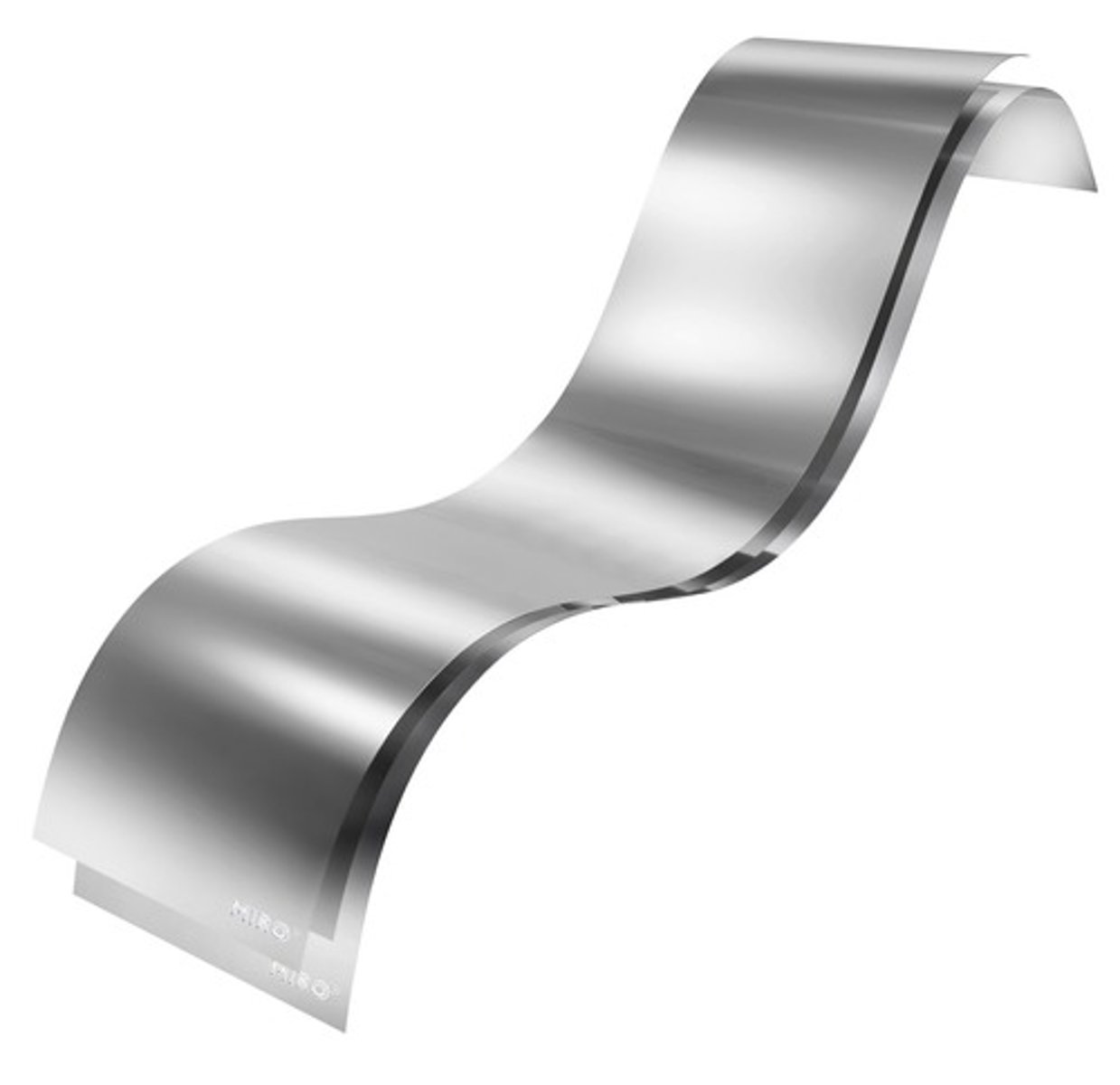
CRB True or false? Metals are considered to be good conductors because they can exist in multiple oxidation states. This means that valence electrons are only loosely held by an atom and are free to move.
True. Metals are considered to be good conductors because they can exist in multiple oxidation states. This means that valence electrons are only loosely held by an atom and are free to move.
This is also a description of the term "sea of electrons".
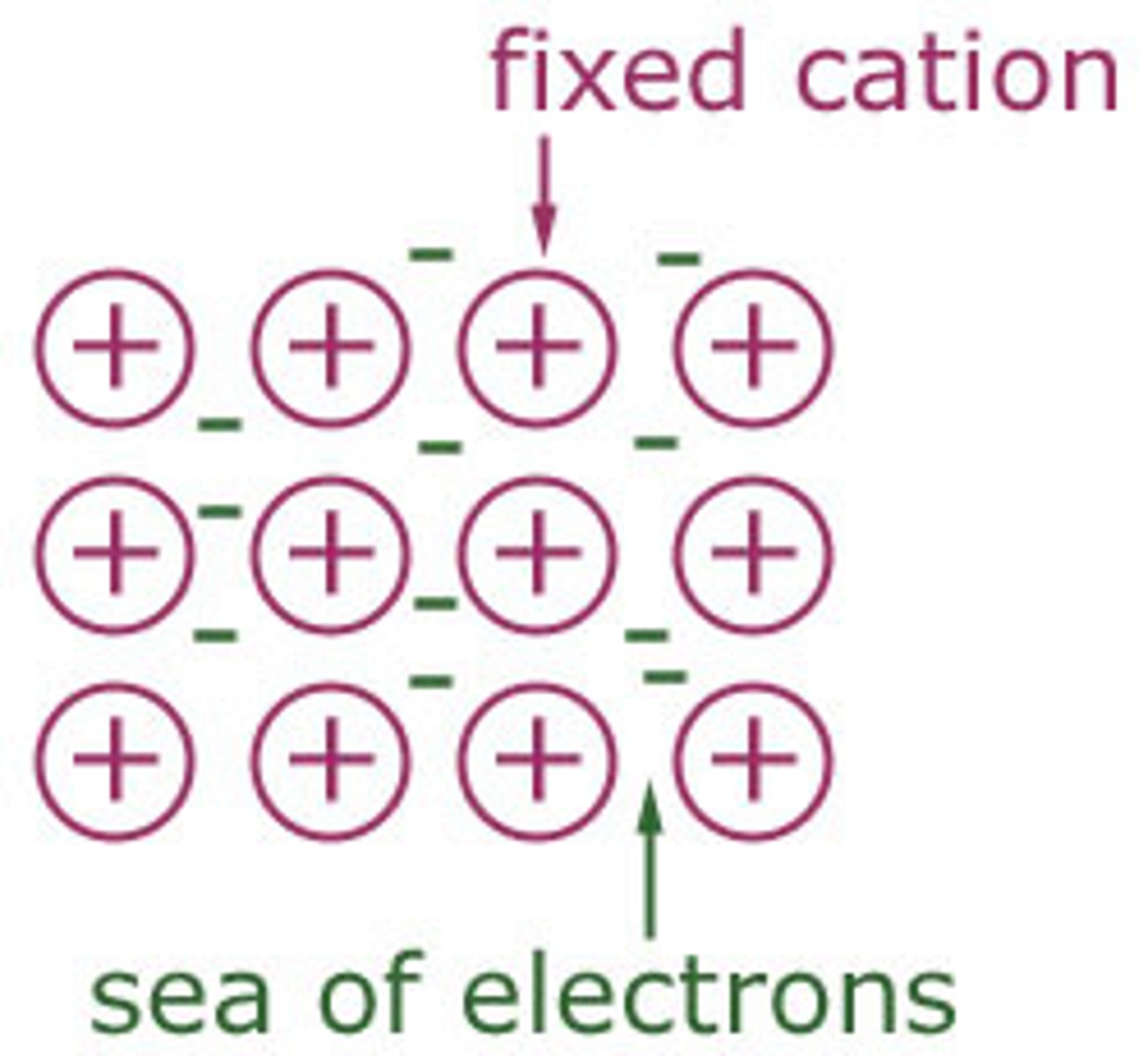
CRB The chalcogens belong to which group, containing essential elements for biochemical functions like Sulfur and Oxygen?
The chalcogens belong to group 6A, or group 16.
Halogens belong to which group as compared to Noble Gases?
Halogens belong to group 7A as compared to Noble Gases, which belong to group 8A.
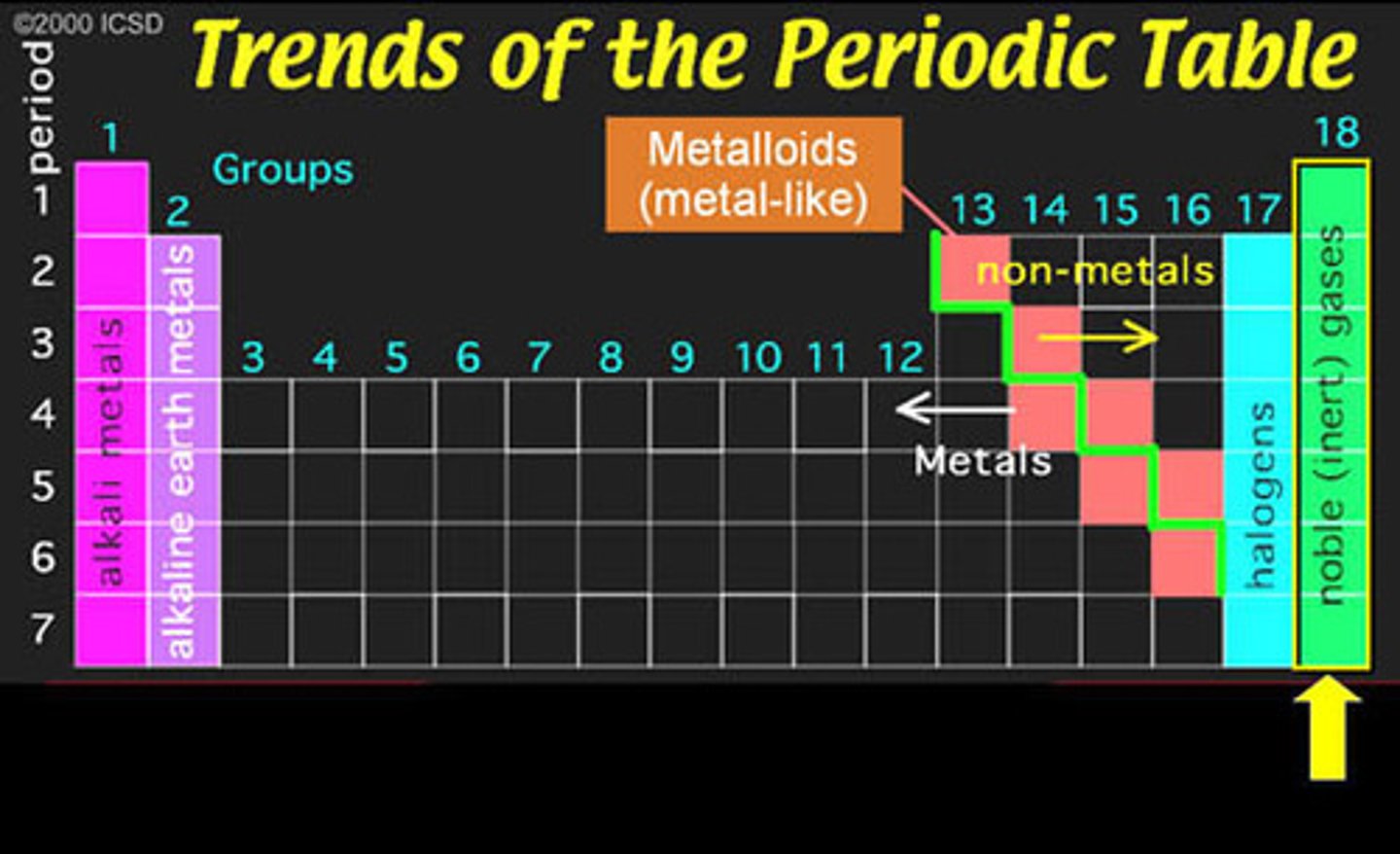
True or false? Noble gases are more reactive than halogens because noble gases are more mobile and mixable as gases.
False. Halogens are more reactive than noble gases because halogens have an unpaired electron in their outermost orbital.
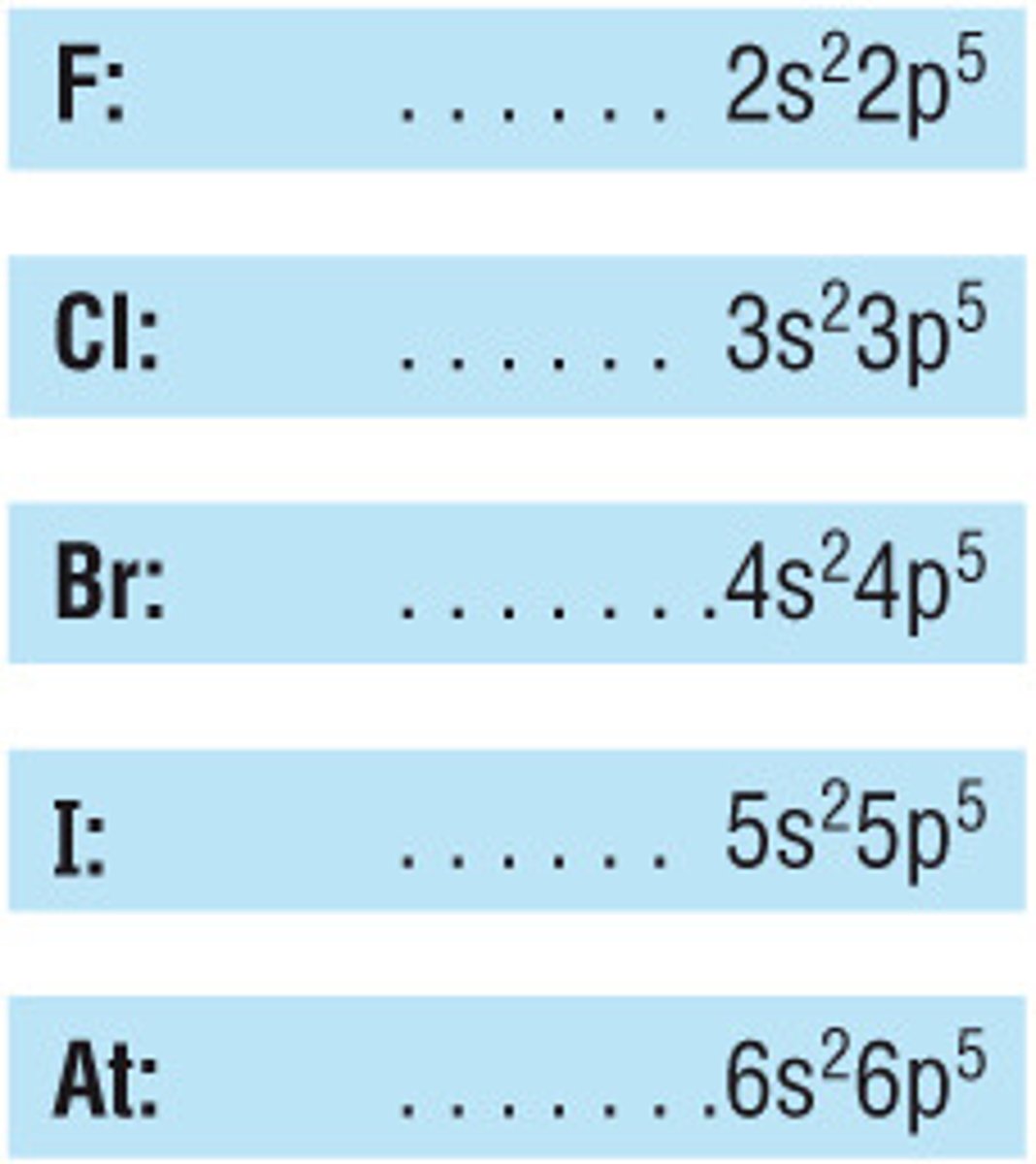
CRB The octet rule states that an element will gain or lose electrons to achieve a stable octet formation, like the noble gases have. However, the octet rule has many exceptions. Which of the following is NOT one of the exceptions experimentally seen?
(A) Noble gases like Xenon can form covalent bonds using more than eight electrons like XeF6.
(B) Helium is a noble gas and relatively inert, even though it only has two valence electrons.
(C) Nitrogen can form covalent bonds using more than eight electrons, like in the compound NO3 (with a central Nitrogen and double bonds between 2 O and N)
(D) Silicon can form covalent bonds using more than eight electrons, like in SiO4 (with a central Silicon and double bonds between 2 O and Si).
(C) Nitrogen can form covalent bonds using more than eight electrons, like in the compound NO3 (with a central Nitrogen and double bonds between 2 O and N)
The octet rule does not have exceptions in period 2, where Nitrogen is found. Also, that description of NO3 in the answer is incorrect.

CRB Reactions between elements on opposite ends of the periodic table can be extremely exothermic because both elements are gaining stability by moving closer to the octet rule. Which of the following would NOT be an example of this scenario?
Periodic table: http://www.sbcs.qmul.ac.uk/iupac/AtWt/table.gif
(A) Li and Cl
(B) B and N
(C) Ca and O
(D) Ra and Po
(B) B and N
Both Boron and Nitrogen are on the right side of the periodic table (groups 3A and 5A), and a reaction between Boron and Nitrogen will not have the same strength that a Group 1A or 2A element reacting with a group 6A or 7A element would.
Metals are solids at room temperature. The only exception is which metal element?
(A) Bromine
(B) Cobalt
(C) Mercury
(D) Manganese
(C) Mercury is the only metal that is not a solid at room temperature.
Bromine is a liquid at room temperature, but it is a halogen.
Cobalt and manganese are solid metals.
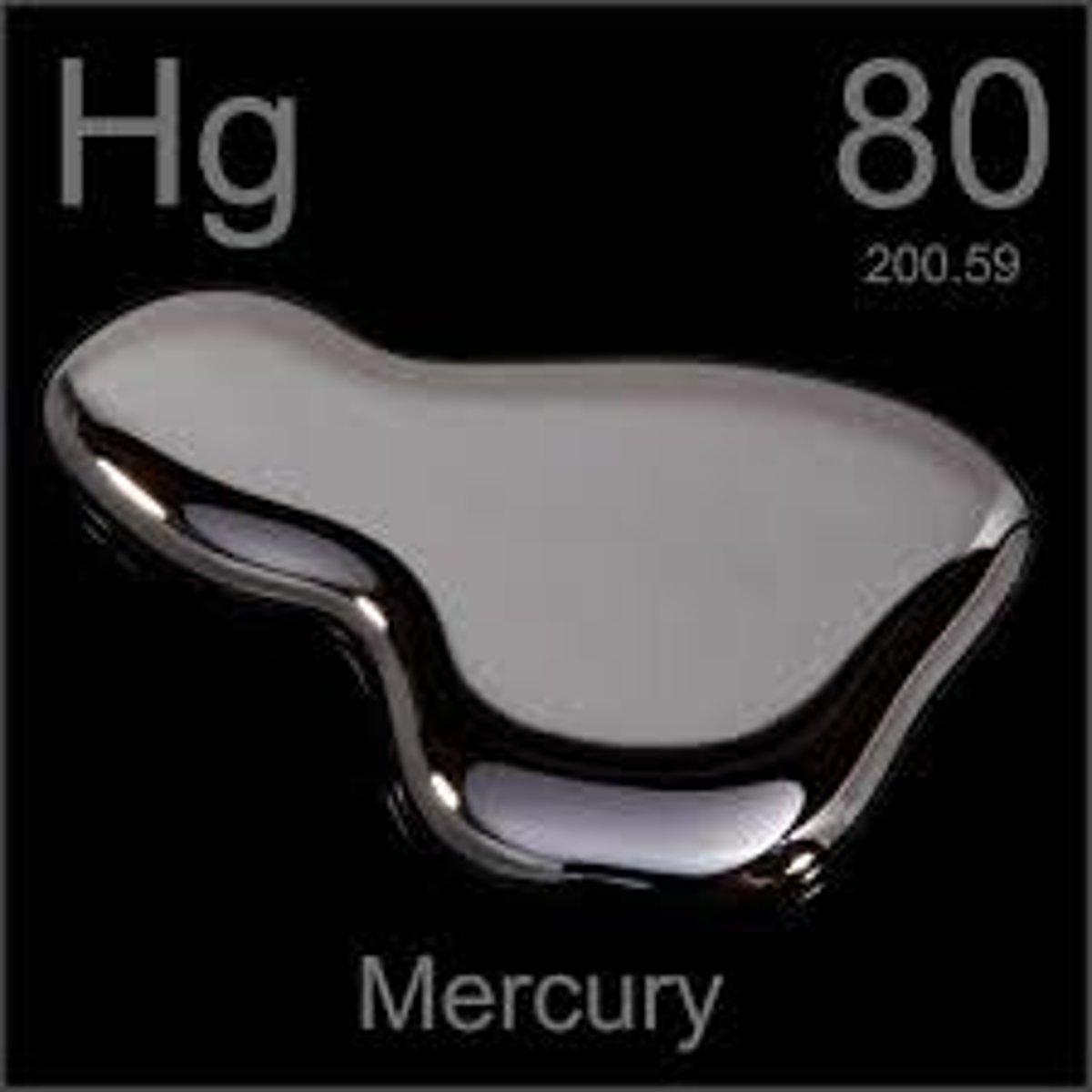
Where will you find metalloids on the periodic table?
On the border of the dividing line between metals and nonmetals.
Look at the following image of the periodic table and visualize the dividing line between metals and nonmetals: http://www.sbcs.qmul.ac.uk/iupac/AtWt/table.gif
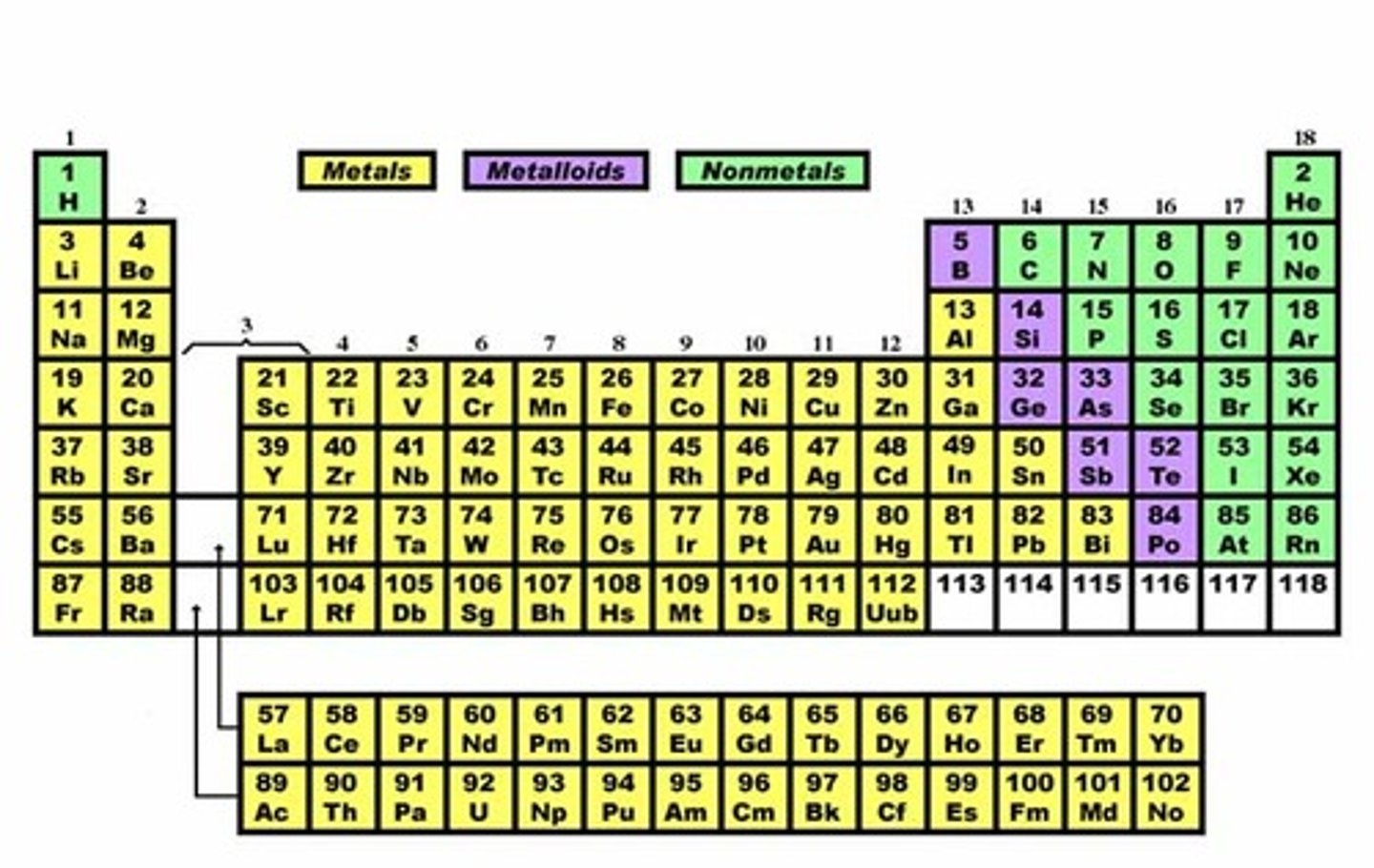
True or false? Due to their metallic properties, metalloids are considered conductors just as metals are.
False. Metalloids are considered semi-conductors.
CRB True or false? Metalloids can also be called semimetals, because they can alternatively act as metals or nonmetals in the same environment.
False. Metalloids (also called semimetals) can act as either metals or nonmetals DEPENDING on the environment. For example, Boron will act like a nonmetal when surrounded by Sodium but like a metal when surrounded by Fluorine.
What metals are considered transition metals?
Metals in the d-block (groups 3 through 12).
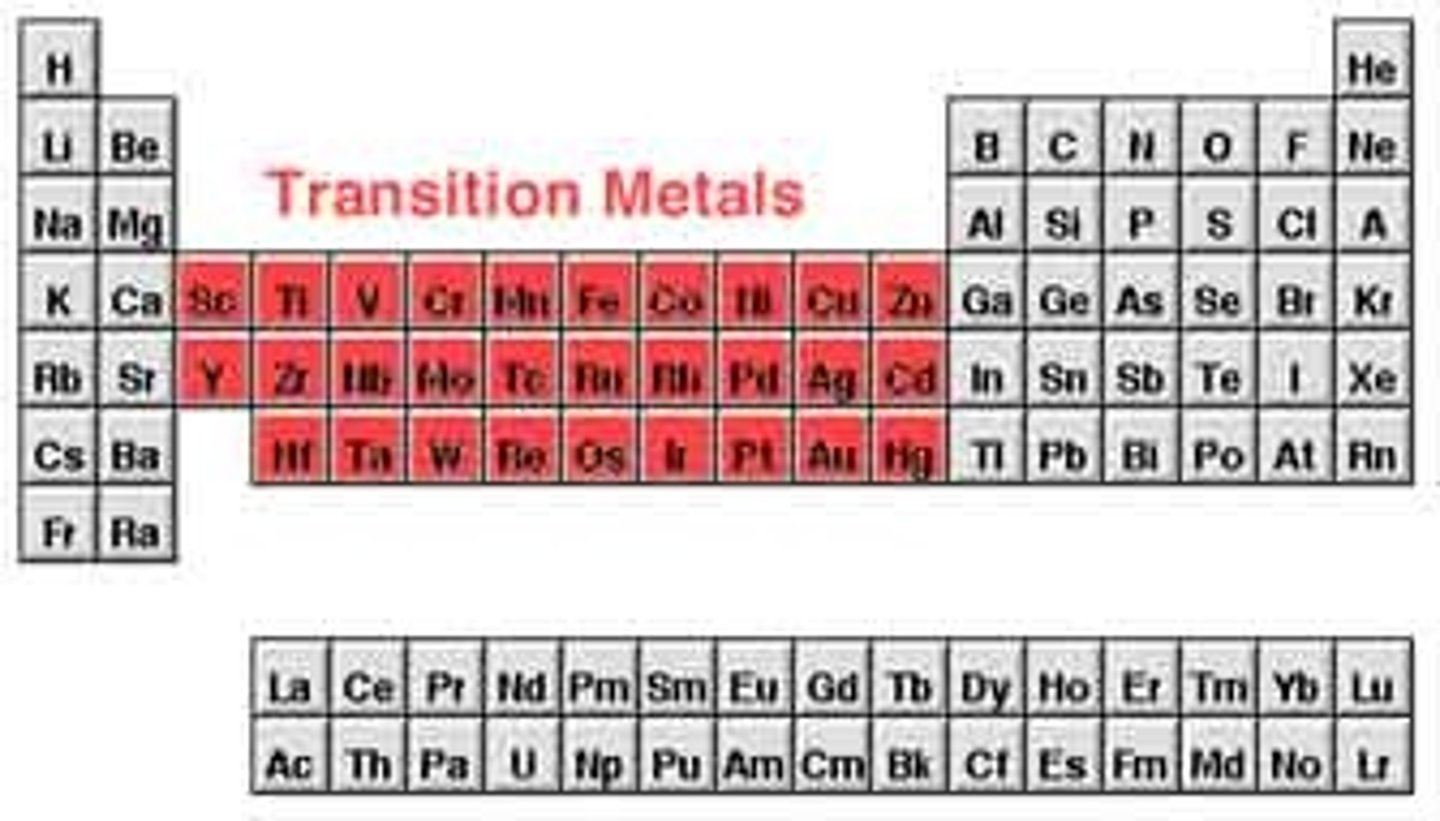
Why does IUPAC not consider Zn(s) a transition metal?
It has a complete d-subshell, even in its +2 cation form.
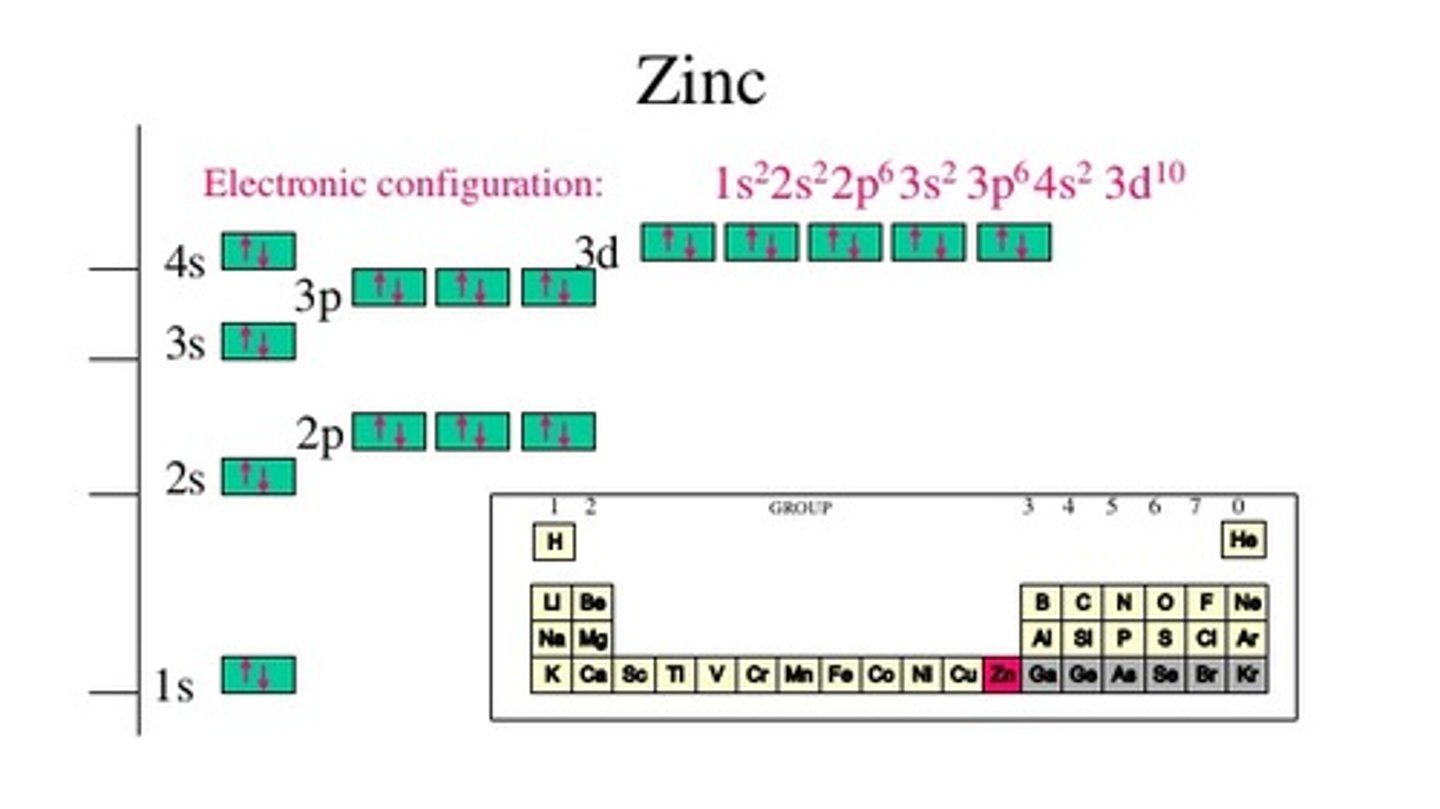
Draw the electron configurations (dot structures) of Chlorine's valence shell, and Sodium's valence shell.
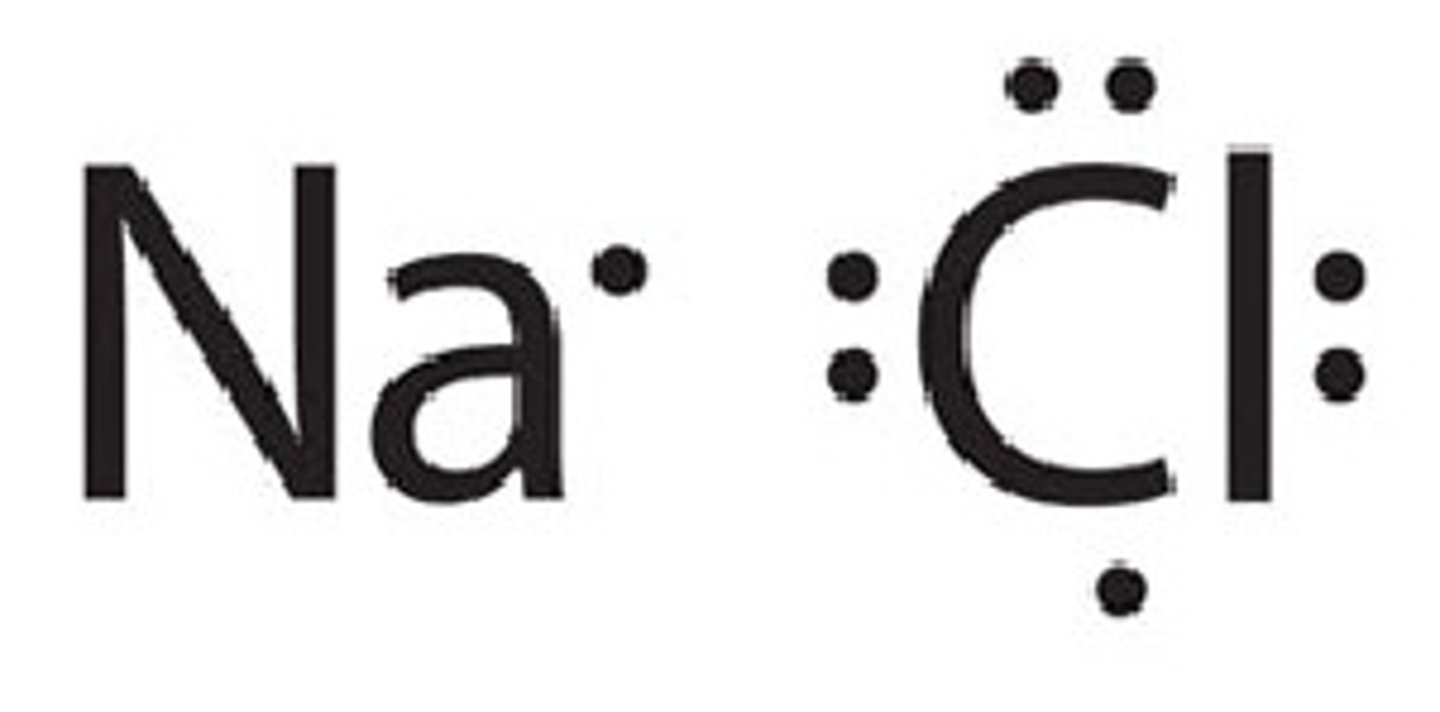
Look at the following period table and describe the trend for increasing size of an element: http://www.sbcs.qmul.ac.uk/iupac/AtWt/table.gif
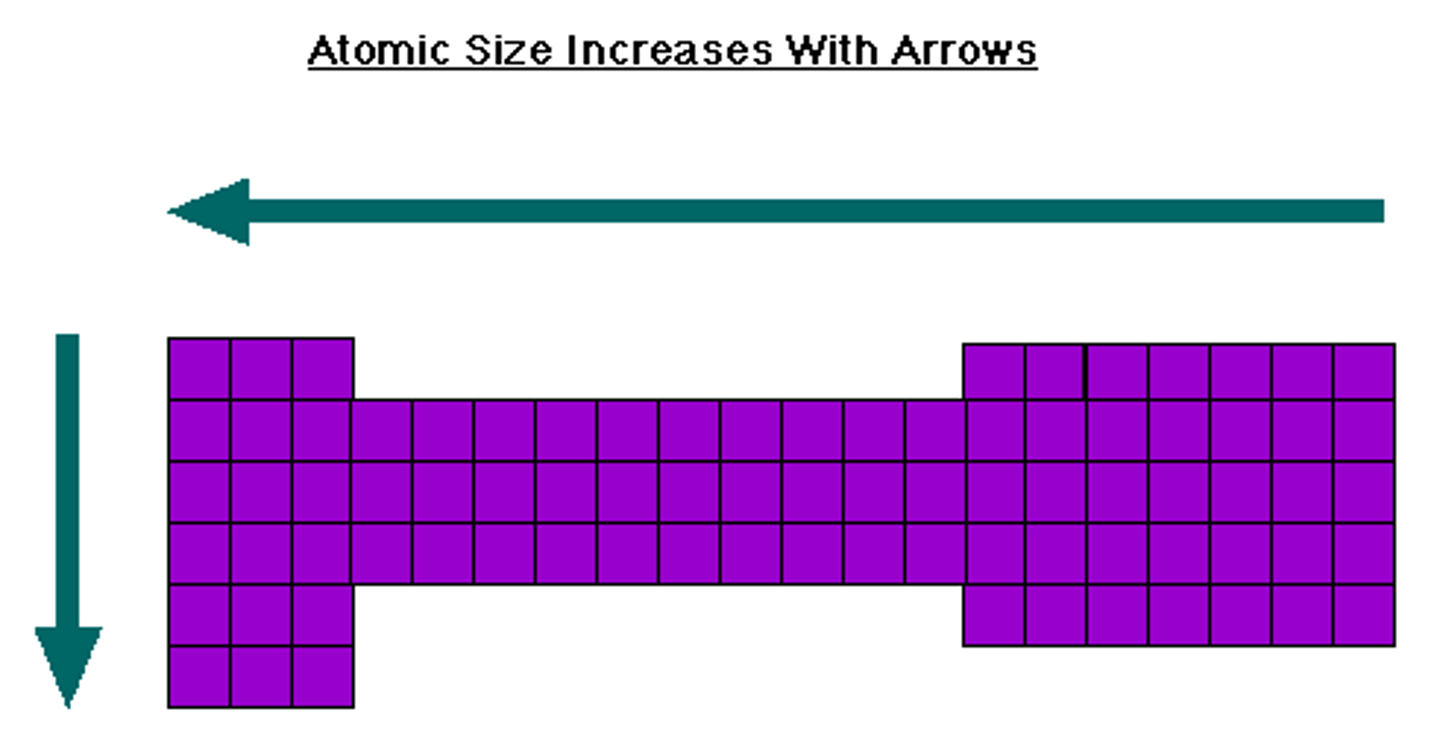
Why does size increase as you go down a group? Why does size increase as you go to the left on a period?
Size increases as you go down a group because you are adding more shells of electrons. Size increases as you go to the left on a period because electron shielding (see image) remains the same as positive nuclear charge decreases.
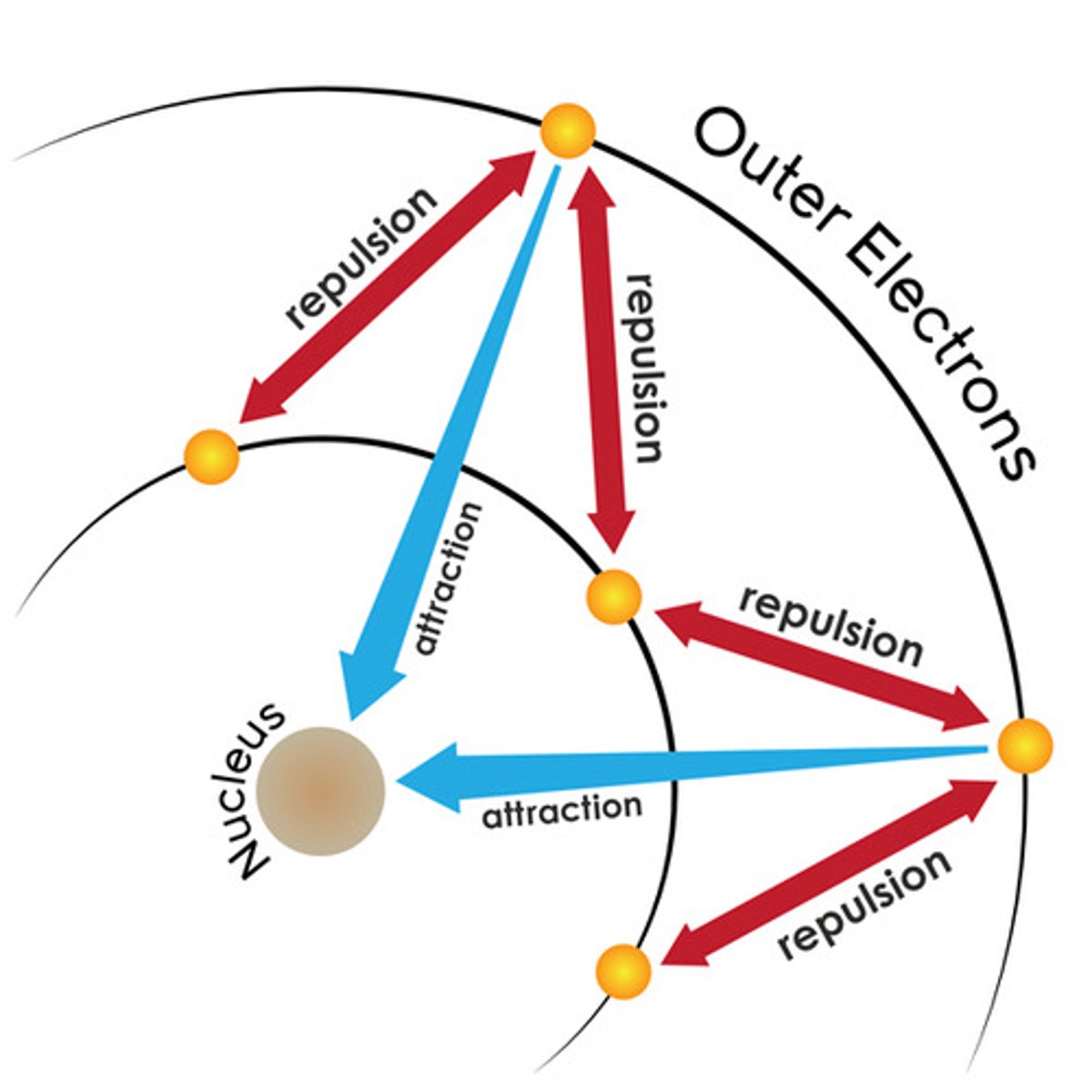
A cation is bigger or smaller than its original atom? Why?
Smaller because you are taking an electron away, potentially reducing electron repulsion, making it smaller.
An anion is bigger or smaller than its original atom? Why?
Bigger because you are adding an electron, potentially increasing electron repulsion, making it bigger.
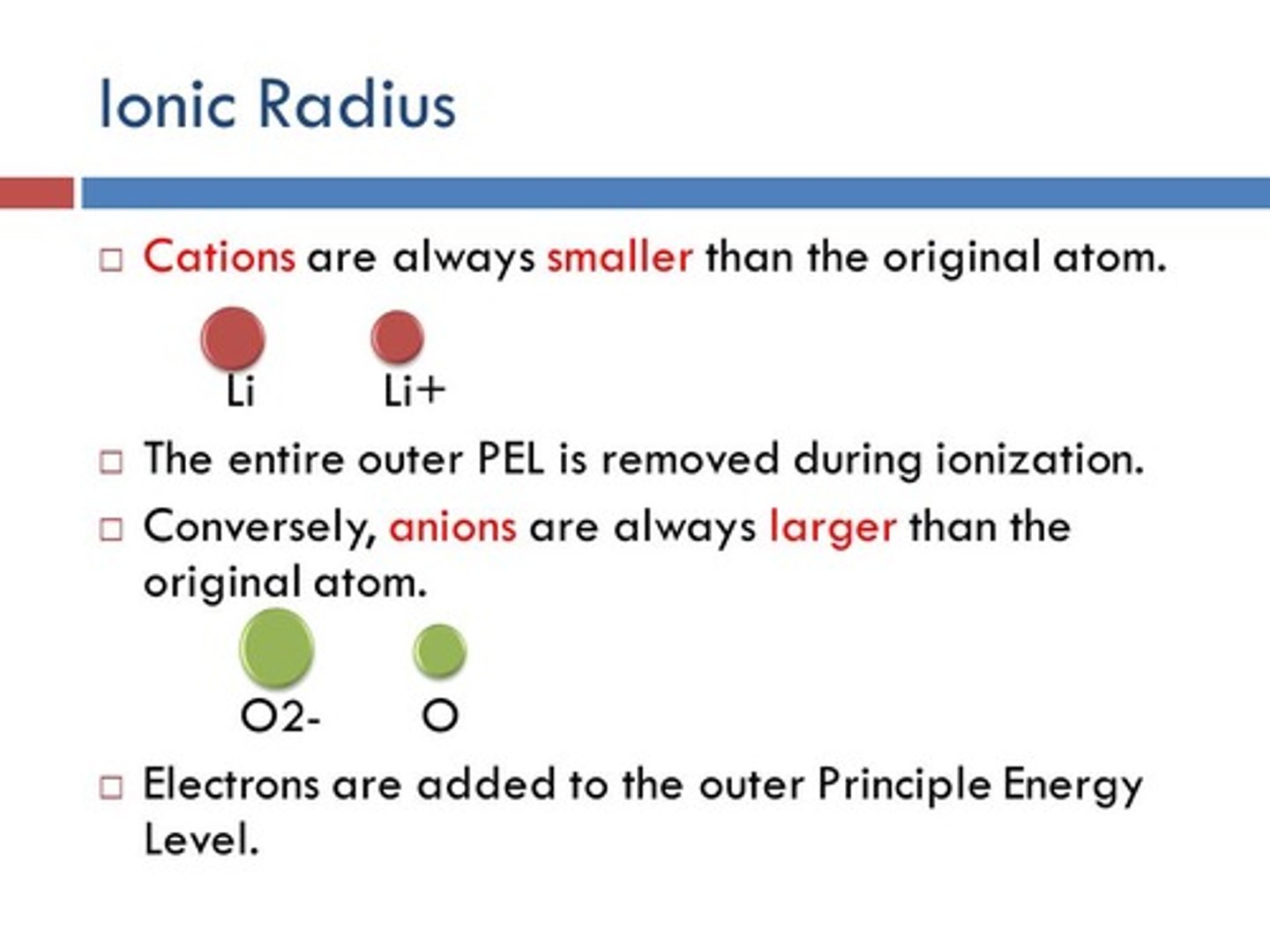
Look at the following period table and describe the trend for increasing ionization energy: http://www.sbcs.qmul.ac.uk/iupac/AtWt/table.gif
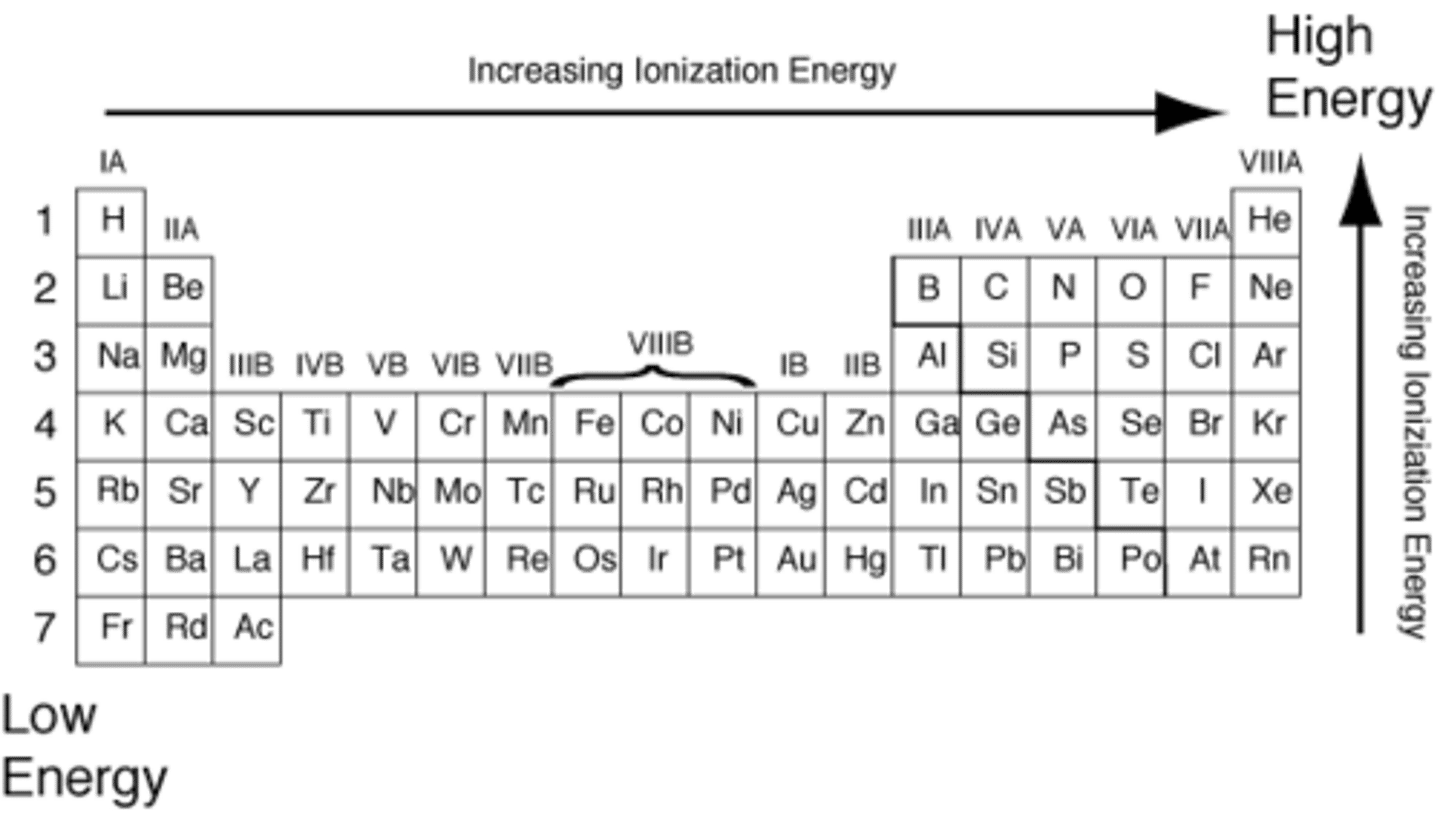
CRB True or false? The second ionization energy is larger than the first ionization energy because it is the sum of energy needed to remove both electrons from the neutral element.
False. The second ionization energy is the amount of energy it takes to go from X+ to X2+, and is larger than the first ionization energy because more energy is required to take an electron from a cation than to take an electron from a neutral atom.
What is effective nuclear charge (Zeff)?
It is the amount of charge that an electron actually experiences from the nucleus.
What simple equation illustrates the relationship between effective nuclear charge (Zeff) and electron shielding?
Zeff = Z (nuclear charge) - S (electron shielding)
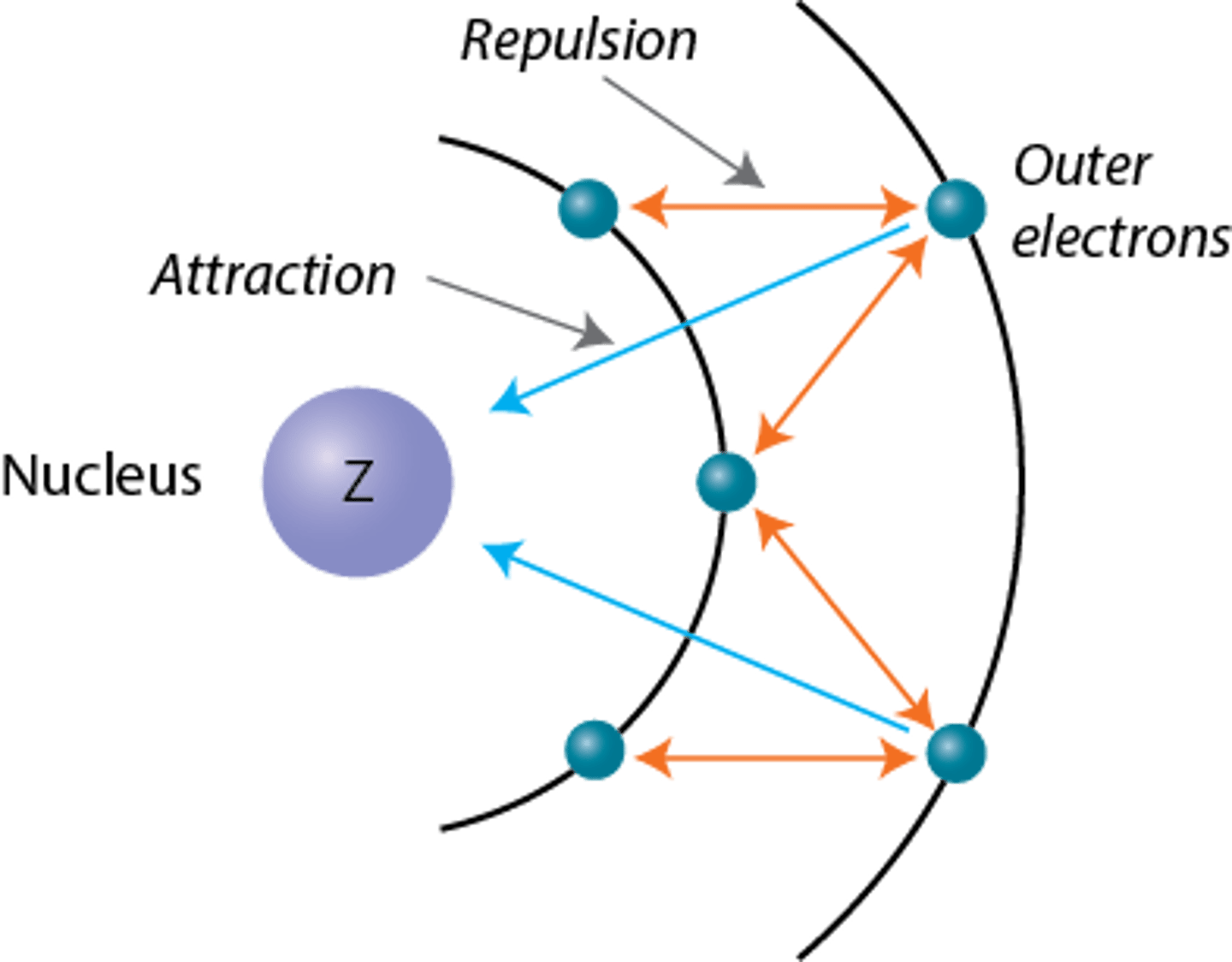
CRB The Zeff of an element increases from left to right on the periodic table, meaning there is a greater nuclear charge compared to electron shielding. Based on this information, which of the following descriptions of atomic radii trends is correct?
(A) Atomic radii increase moving up the periodic table and from left to right because that increased nuclear charge will force the nucleons to repel each other more.
(B) Atomic radii increase moving up the periodic table and from left to right because the increased nuclear charge pulls the outer electrons closer to the nucleus.
(C) Atomic radii decrease moving up the periodic table and from left to right because that increased nuclear charge will force the nucleons to repel each other more.
(D) Atomic radii decrease moving up the periodic table and from left to right because because the increased nuclear charge pulls the outer electrons closer to the nucleus.
(D) Atomic radii decrease moving up the periodic table and from left to right because because the increased nuclear charge pulls the outer electrons closer to the nucleus.
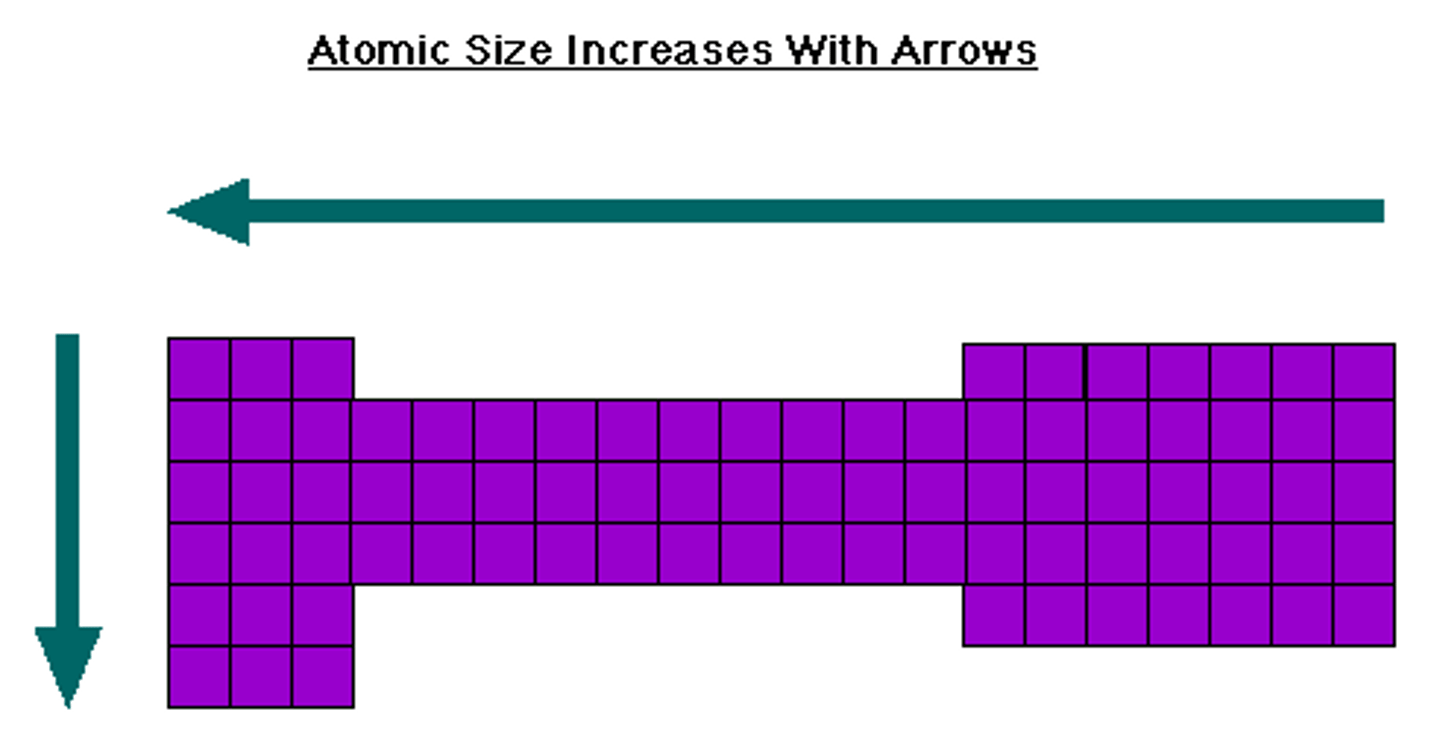
If Hydrogen and Lithium both have the same Zeff, why does Hydrogen have a higher ionization energy?
Because Lithium's outer electron is farther away from the nucleus.

Why does ionization energy increase as you go up a group? Why does ionization energy increase as you go to the right on a period?
Ionization energy increases as you go up a group and to the right on a period because size is decreasing, meaning the electrons are closer to the positively charged nucleus, making it harder to pull electrons away.
What is the difference between first and second ionization energy? Which is typically larger and why?
First ionization energy is the energy to pull away the first electron from an atom and it is smaller than the second ionization energy, which is the energy required to pull the second electron away from the nucleus. Second ionization energy is larger due to lower electron shielding and a smaller distance from the nucleus.
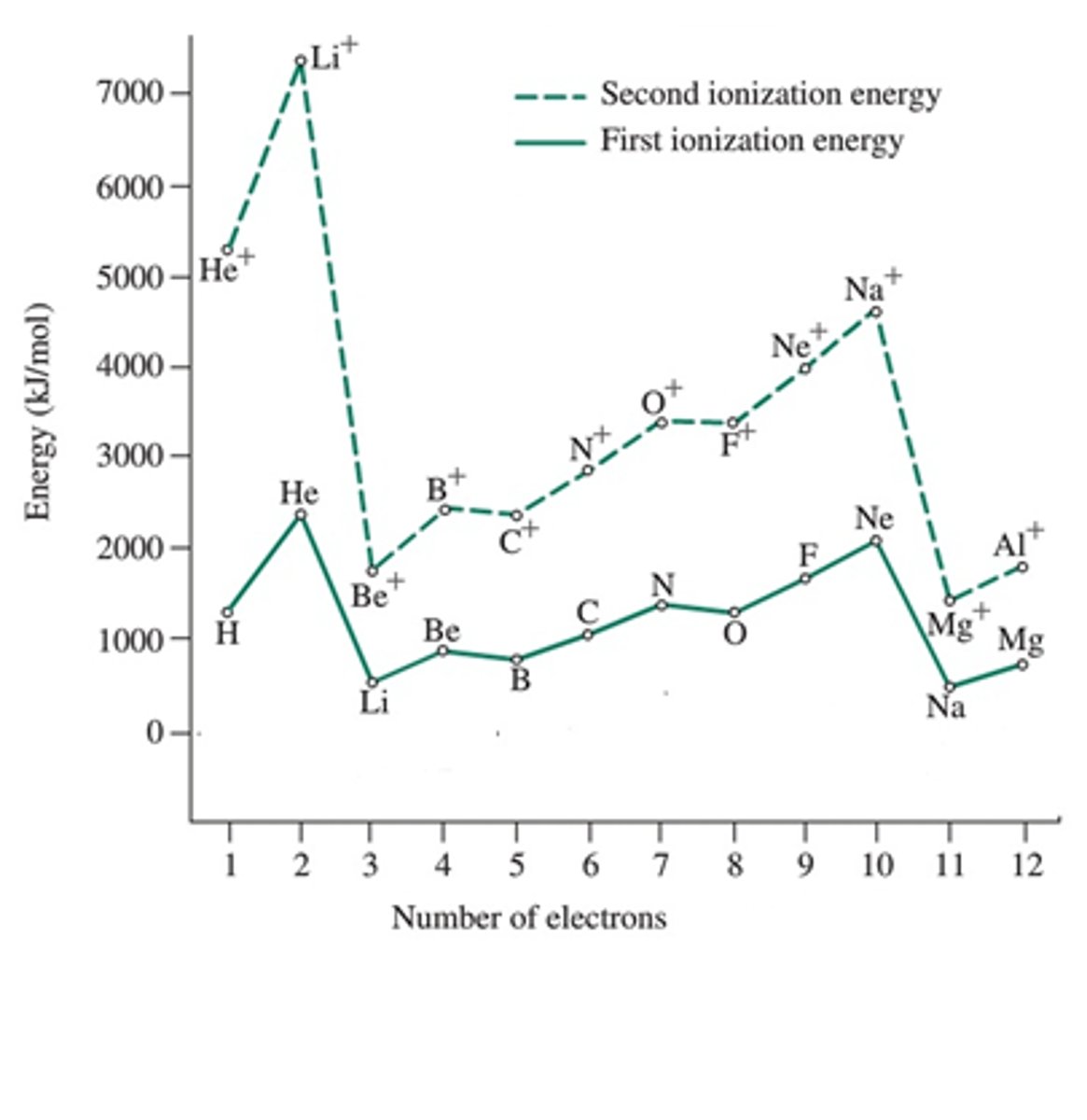
Look at the following period table and describe the trend for increasing electronegativity: http://www.sbcs.qmul.ac.uk/iupac/AtWt/table.gif
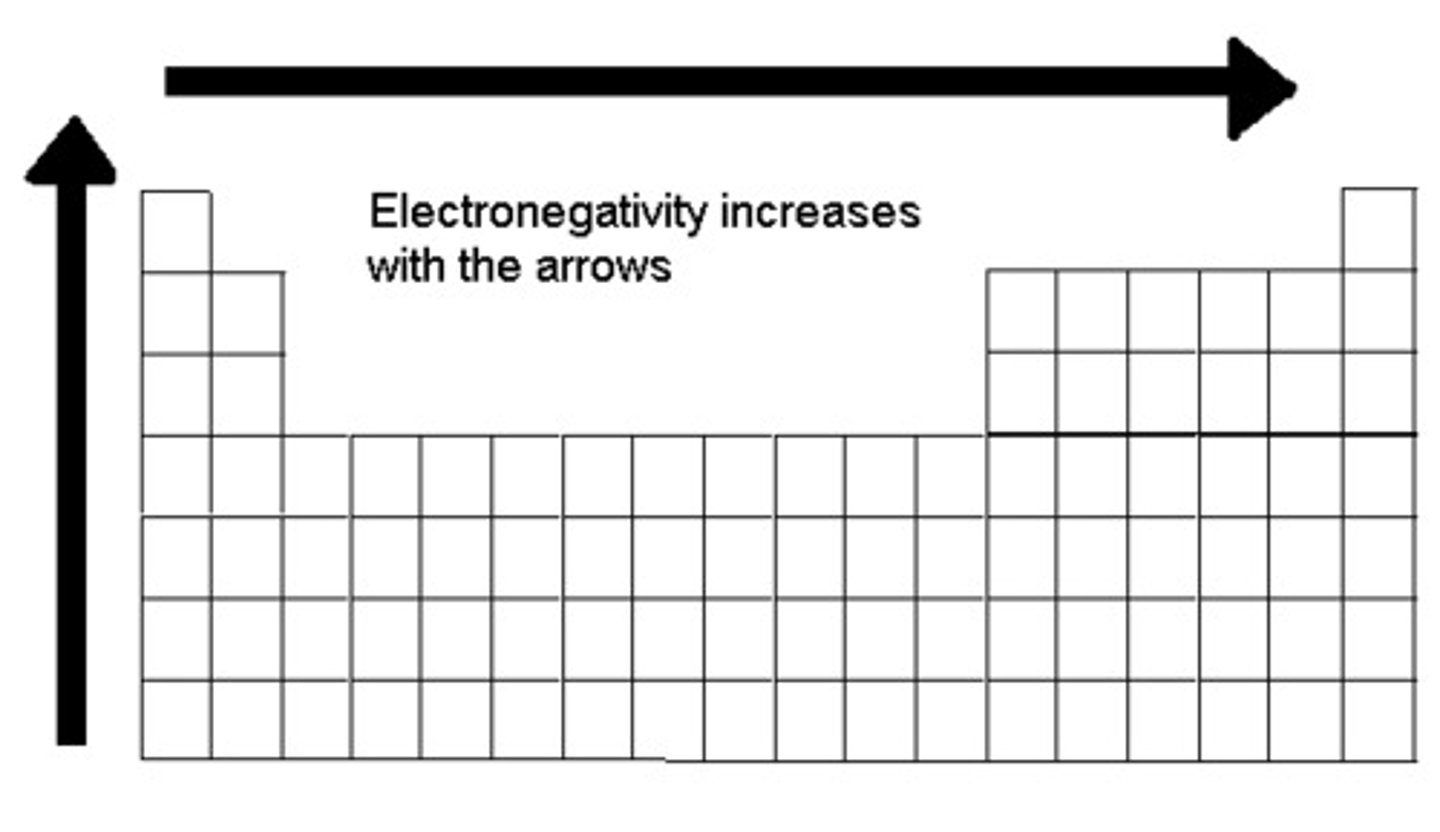
CRB The acidity of a compound depends on how well an atom can accommodate a negative charge. How does this relate to electronegativity's trends of increasing moving up and to the right?
(A) Acidity will have the same trends because electronegativity is how much an element wants a negative charge, and donating the proton gives it a negative charge.
(B) Acidity will have the same trends because electronegativity increases as atomic radius decreases, and a smaller radius will allow a more delocalized negative charge, providing more stability.
(C) Acidity will not have the same trends because electronegativity is how much an element wants a negative charge, and donating the proton gives it a negative charge.
(D) Acidity will not have the same trends because electronegativity increases as atomic radius decreases, and a larger radius will allow a more delocalized negative charge, providing more stability.
(D) Acidity will not have the same trends because electronegativity increases as atomic radius decreases, and a larger radius will allow a more delocalized negative charge, providing more stability.
Acidity increases moving to the right and moving down the periodic table.
Why does electron affinity increase as you go up a group? Why does electron affinity increase as you go to the right on a period?
The electron affinity increases as you go up a group because the atom is getting smaller, which means the electron is being added closer to the positively charged nucleus.
The electron affinity increases as you go to the right on a period because of increased nuclear charge with the same amount of shielding.
Which has a greater electron affinity: Lithium or Berylium? Why?
Periodic table: http://www.sbcs.qmul.ac.uk/iupac/AtWt/table.gif
Lithium. This breaks the normal electron affinity trend because Berylium's new electron will be added to a far away p orbital, which will experience more shielding than Lithium completing its s orbital.
Which has a greater electron affinity: Nitrogen or Carbon? Why?
Periodic table: http://www.sbcs.qmul.ac.uk/iupac/AtWt/table.gif
Carbon. This breaks the normal electron affinity trend because Nitrogen's new electron will be added to a p orbital with another electron, which increases the amount of repulsion that the new electron will experience.
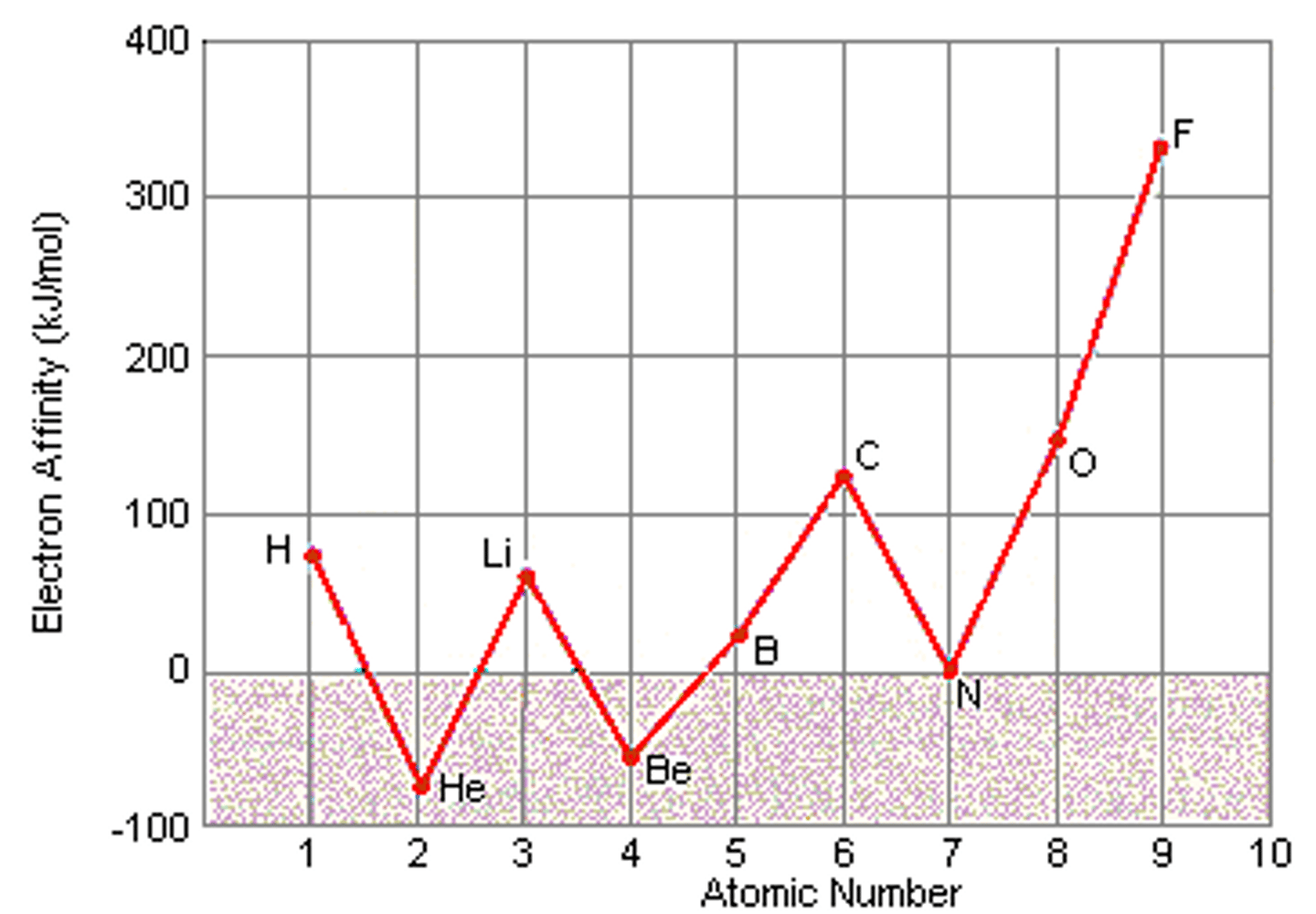
Paramagnetic
A term describing species that have unpaired electrons, resulting in an attraction to an external magnetic field
Diamagnetic
When all electrons are paired, resulting in the production of its own magnetic field in the opposite direction (and thus weakly repelled by an external magnetic field)
How are valence electrons determined? How many valence electrons are in Cl?
By counting the number of electrons in the outermost shell/energy level.
For Cl, the electron configuration is [Ne] 3s23p5. The outermost shell is n = 3, where there are a total of 7 electrons. So Cl has 7 valence electrons.
Scientists find a previously undescribed substance inside a meteorite that has hit Earth. They are able to draw the substance into a wire, but when they try to hammer the substance into thin sheets, the substance will sometimes act brittle and shatter. What type of earthly substance is this most like?
A) Phosphorous, because it acts characteristically like a nonmetal.
B) Phosphorous, because it shares qualities of metals and nonmetals.
C) Arsenic, because it acts characteristically like a metal.
D) Arsenic, because it shares qualities of metals and nonmetals.
D) Arsenic, because it shares qualities of metals and nonmetals.
A student is told by their primary investigator that the second ionization energy is lalrger than the first, so they should be careful to not apply too much energy or heat to their reaction. Why does the second ionization energy require more energy than the first?
The second ionization energy is pulling the electron away from a cation, which requires more energy than a neutral atom would. The effective nuclear charge does not necessarily change — only if the number of non-valence electrons changes or when the number of protons changes.
Reactions between metals and nonmetals are often extremely exothermic, since both elements gain stability by moving closer to the octet rule. Which of the following would not react to be an example of this scenario?
A) Radium and water.
B) Boron and nitrogen.
C) Rubidium and astatine.
D) Aluminum and phosphorous.
B) Boron and nitrogen.
Which elements are metalloids?
B, Sl, Ge, As, Sb, Te, At
A student wants to make a permanent magnet, and is learning about paramagnetic and diamagnetic materials. Which material would make a better magnet?
A) Neither.
B) Both.
C) Diamagnetic.
D) Paramagnetic.
A) Neither.
Paramagnetic and diamagnetic materials do not generate magnetic fields by themselves, which means they cannot be used to create a permanent magnet. Both materials interact with external magnetic fields. Paramagnetic materials are attracted to external magnetic fields, and diamagnetic materials are slightly repelled by external magnetic fields.
Explain the difference between electron affinity, ionization energy, and electronegativity.
Electron affinity: how much energy is released when an atom gains an electron. More energy released = atom really wants the added electron.
Ionization energy: how much energy is required to remove an electron from an atom. More energy required = less willing to give up electron.
Electronegativity: how strongly an atom pulls shared electrons towards itself in a bond.